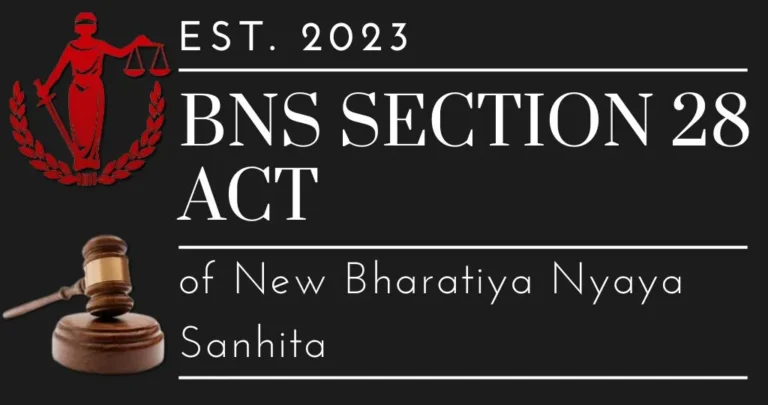
Understanding Section 243: Joint Trial for Multiple Offenses in the Same Transaction
Understanding Section 243: Simultaneous Trial of Multiple Offenses in the Same Transaction – Part 1
Introduction to Section 243
The Bharatiya Nagarik Suraksha Sanhita (BNSS) 2023, Section 243, gives directions regarding how the courts should approach a situation where a person commits several offenses in a related chain of acts constituting a single event or transaction. According to this section, if a person commits multiple offenses as part of a continuous sequence of actions tied to the same purpose or outcome, they may face all related charges in a single trial. This joint trial approach aims to streamline legal proceedings, avoid multiple trials for connected offenses, and ensure that all relevant offenses are adjudicated in one go.
For More Updates & Regular Notes Join Our Whats App Group (https://chat.whatsapp.com/DkucckgAEJbCtXwXr2yIt0) and Telegram Group ( https://t.me/legalmaestroeducators ) contact@legalmaestros.com.
This is the first of a series of articles elucidating Section 243 of the BNSS in detail. Here, we shall analyze the overall principle and every illustration given within Section 243 to demonstrate how different offenses can be tried jointly.
Series of Acts Forming the Same Transaction
Section 243(1) of the BNSS provides that where a connected series of acts are so tied together that they amount to a single event or “transaction,” offenses resulting from such acts may be tried simultaneously. This so-called “transaction” refers to the fact that the acts are so intimately joined in purpose and execution that they represent a linked series of events with the same intent or result.
For example, if an individual steals and, during the act of escaping, hurts someone, both the theft and the hurting can be considered as part of one transaction. This allows the prosecution to charge all the offenses encompassed by this unified set of activity in a single combined trial, if only they meet the requirements of being included in the same transaction.
Illustrations Under Section 243(1)
For More Updates & Regular Notes Join Our Whats App Group (https://chat.whatsapp.com/DkucckgAEJbCtXwXr2yIt0) and Telegram Group ( https://t.me/legalmaestroeducators )
The BNSS sets out in Section 243 examples in detail to explain the kind of situations under which there may be several charges from a single transaction, each of which may be tried jointly.
Illustration (a): Rescue and Injury on Custody
Here, A rescues B from lawful custody. In the act of rescuing B, A seriously injures a constable, C, who had B in custody. Here, A commits two offences:
Rescuing a person from lawful custody.
Causing grievous hurt to a public servant in the discharge of his duty.
These two offenses are directly related to the single action of rescuing B, and thus A can be tried and charged for both offenses together.
Illustration (b): House-Breaking and Assault
A house-breaks with the view to committing another offence upon entry. Particularly, A breaks into a house illegally and proceeds to commit an assault on B’s wife. Two offences take place in this case:
House-breaking with intent.
Assault after entry.
As both acts are part of a single combined aim and occurrence, A may be charged with both offences simultaneously.
Illustration (c): Possession of Counterfeit Seals
An individual, A, possesses a number of counterfeit seals with the intent to utilize them in distinct cases of forgery. In this case, each seal is a distinct potential crime:
Possession of a counterfeit seal with criminal intent.
Multiple instances of the same possession offense.
Since these multiple possessions are within the same intent and time frame, A can be charged and prosecuted for possessing each of the counterfeit items in a single trial.
Illustration (d): False Criminal Proceedings and Accusation
A harbors an evil intention to harm B and starts a criminal case against B on no grounds. Further, A falsely accuses B of a certain crime in the process. A does two acts:
Filing a frivolous criminal case.
Filing a false charge.
As both actions are linked with A’s intent to harm B, the court can prosecute A for both charges in one trial.
Illustration (e): False Accusation and False Evidence
A falsely accuses B of a heinous crime, with the intention to cause harm to him. During the subsequent trial, A gives false evidence with the intention that B should suffer severely. These include:
False accusation.
Providing false evidence with malicious intent.
Since both are done with the intention of causing harm to B, they are related and can be dealt with in one trial.
Illustration (f): Riot, Grievous Hurt, and Assault on Public Servant
A, and others, participate in a riot which results in several offenses, such as assaulting a public servant. A’s acts amount to:
Rioting.
Causing grievous hurt.
Assaulting a public servant attempting to preserve peace.
As these offenses are all connected with one occurrence — the riot — they may be tried together.
Illustration (g): Threats to Multiple Persons
Here, A menaces three individuals, B, C, and D, at the same time, with the intent to cause fear to all three. A commits independent acts of menacing against each individual:
Menacing B.
Menacing C.
Menacing D.
Since all the acts constitute one occurrence, A can be tried for all three offenses in a single trial.
Purpose of a Joint Trial Under Section 243
The main purpose of Section 243 is judicial efficiency. By trying several related offenses in one case, the courts are able to have a complete picture of each offense, minimize redundant procedures, and enable effective utilization of legal resources. The section is especially useful in complicated cases with multiple offenses connected through intent and circumstances so that the court can analyze the overall picture in one consolidated proceeding.
Significance of Illustrations in Interpreting Section 243
The illustrations in Section 243 explain how diverse cases with multiple offenses are to be dealt with in one trial. The approach is also advantageous for the accused because they will have a chance to defend against all related charges simultaneously, as opposed to being subjected to successive separate trials. The examples highlight how the BNSS works towards achieving a balance between completeness and expediency in judicial proceedings.
Conclusion: A Series of Articles on Section 243
Section 243 of the BNSS is an essential provision for complex series of acts where several offenses emerge within a single transaction. This article is the first in a series of articles on Section 243, where each installment will explore the intricacies of these legal provisions in greater detail to better understand joint trials in Indian law. Future articles will further detail particular scenarios, such as the use of evidence and procedural matters that must be taken into account by courts in joint trials. This series will give a general overview of the effect of Section 243 on judicial practice in India






